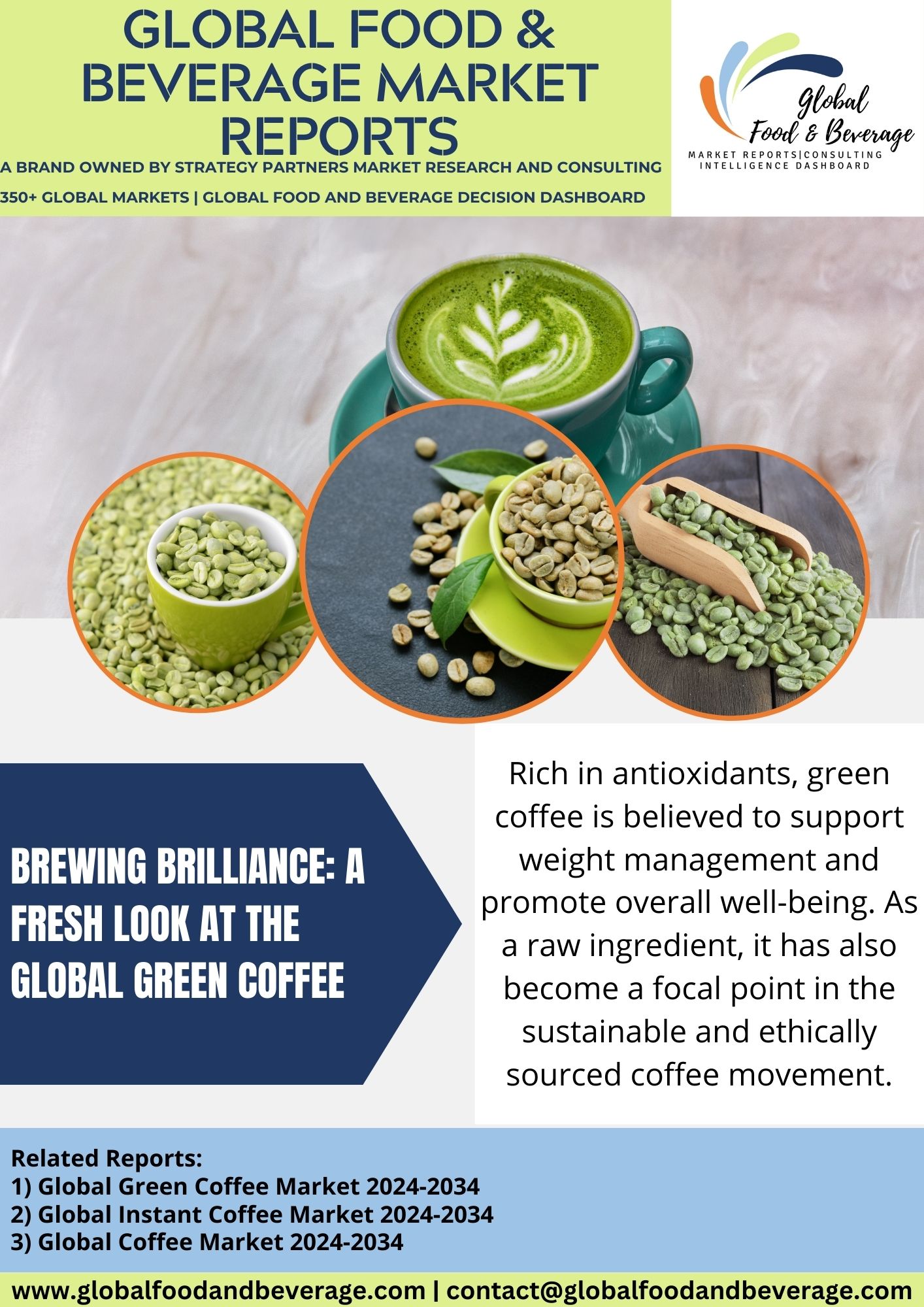Brewing Brilliance: A Fresh Look at the Global Green Coffee Market
Green coffee, derived from unroasted coffee beans, has gained popularity for its potential health benefits and unique composition. Unlike traditional roasted coffee beans, green coffee retains higher levels of chlorogenic acid, a natural compound believed to have antioxidant properties and potential health-promoting effects. The roasting process typically degrades some of these compounds, making green coffee a distinctive option for those seeking a different coffee experience.

One of the primary attractions of green coffee is its association with weight management. Some studies suggest that chlorogenic acid may help reduce body weight by influencing metabolism and fat absorption. As a result, green coffee extract has found its way into various weight loss supplements and wellness products, garnering attention from individuals looking for natural aids in their fitness journeys.
Green coffee is also known for its potential to support blood sugar regulation. Some research indicates that chlorogenic acid may help improve insulin sensitivity, potentially aiding in the management of blood sugar levels. While more studies are needed to fully understand the extent of these effects, the preliminary findings suggest a promising avenue for exploring the broader health impact of green coffee.
In addition to its potential health benefits, green coffee offers a different flavor profile compared to traditional coffee. Its taste is often described as more herbal, slightly grassy, and less bitter than roasted coffee. As a result, green coffee has become a subject of interest for coffee enthusiasts and those looking for a unique sensory experience.
While green coffee has gained attention in various wellness circles, it’s essential to approach its consumption with a balanced perspective. While chlorogenic acid and antioxidants are present in green coffee, individual responses to these compounds can vary. As with any supplement or dietary change, consulting with a healthcare professional is advisable, especially for individuals with existing health conditions or those considering green coffee for specific health goals.
ADVANCEMENTS
Green coffee processing and consumption have propelled this unroasted form of coffee into the spotlight, with a focus on sustainability, health benefits, and flavor nuances. One significant breakthrough is the adoption of innovative processing methods to enhance the quality of green coffee beans. Techniques such as wet processing and precision fermentation contribute to cleaner, more consistent flavors and reduce environmental impact by minimizing water usage and waste.
The exploration of unique green coffee varieties and origins has expanded, driven by a growing interest in terroir and regional flavor profiles. Specialty coffee producers are experimenting with distinct cultivars and processing techniques, offering consumers a diverse range of green coffee options with specific and unique tasting notes.
Advancements in sustainable farming practices, such as agroforestry and organic cultivation, are transforming the green coffee industry. Producers are adopting environmentally friendly methods that promote biodiversity, soil health, and long-term sustainability. This shift aligns with consumer preferences for ethically sourced and environmentally conscious products.
The rise of specialty green coffee beverages, including green coffee extracts and cold brew made from unroasted beans, has gained popularity. Green coffee is being recognized for its potential health benefits, attributed to higher levels of chlorogenic acids and antioxidants that are often lost during the roasting process. As a result, green coffee is finding its way into health-focused beverages and dietary supplements.
Technological advancements in green coffee quality assessment and traceability contribute to transparency in the supply chain. Modern tools for evaluating factors such as moisture content, bean density, and chemical composition allow for more accurate grading and profiling of green coffee, enabling both producers and consumers to make informed choices.
CHALLENGES
The green coffee industry, referring to unroasted coffee beans, faces a range of challenges from cultivation to market distribution. One significant challenge is the vulnerability of coffee crops to climate change. Variability in temperature and rainfall patterns can affect the quality and yield of coffee beans. Sustainable agricultural practices and adaptation strategies are crucial for mitigating the impact of climate-related challenges on green coffee production.
Ensuring quality and consistency in green coffee beans is a persistent challenge. Factors such as altitude, soil conditions, and processing methods contribute to the flavor profile of coffee. Maintaining these characteristics consistently can be challenging, especially in regions with varying agricultural practices. Implementing quality control measures throughout the supply chain is essential to meet market demands.
Supply chain complexities and transparency are challenges in the green coffee industry. The global nature of the coffee trade involves multiple intermediaries, making it challenging to trace the origin of beans and ensure fair and ethical practices. Efforts to establish transparent supply chains and promote fair trade practices are ongoing challenges for the industry.
Market volatility in green coffee prices poses challenges for both producers and buyers. Fluctuations in commodity prices can impact the livelihoods of coffee farmers and affect the profitability of businesses along the supply chain. Risk management strategies and sustainable pricing models are essential for addressing these challenges.
Regulatory compliance, especially concerning environmental and labor standards, is a growing challenge in the green coffee industry. Adhering to international regulations and certifications demands continuous diligence to ensure sustainable and ethical practices throughout the production process.
CONCLUSION
Gourmet salt has emerged as a culinary revelation, elevating the art of seasoning to new heights. From Himalayan pink salt to infused sea salts, these exquisite crystals redefine the nuances of taste and texture. Beyond their culinary prowess, gourmet salts reflect a commitment to natural, unprocessed options, resonating with health-conscious consumers. The industry’s exploration of diverse sources and flavor profiles offers a sensory journey that transcends traditional seasoning. As the culinary landscape embraces the complexity of gourmet salts, the future promises not just a pinch of flavor but a symphony of tastes, enhancing gastronomic experiences and captivating palates with the nuanced allure of these exceptional salts.
